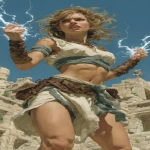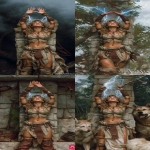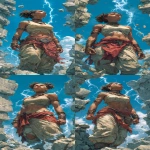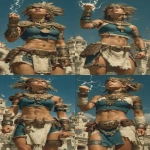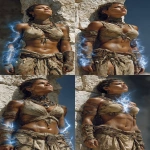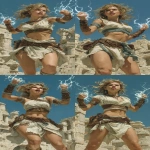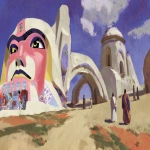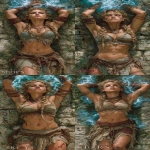Explore the Best AI Image Gallery

Blockchains Creative Revolution: Transforming Finance and the Art World
The intersection of blockchain technology and the creative industry is rapidly evolving, creating a paradigm shift in how we value, trade, and experience art. While blockchain has gained notoriety for its role in cryptocurrencies, its potential extends far beyond finance. In this article, well explore how blockchain is revolutionizing the creative world, its impact on the financial landscape of art, and the ethical considerations that accompany this transformative technology.
Blockchain: A New Canvas for Creativity
Blockchain, at its core, is a decentralized and immutable ledger that records transactions across a network of computers. This inherent transparency and security make it an ideal platform for managing and verifying ownership of digital assets, including art.
NFTs (Non-Fungible Tokens) are revolutionizing the art world by providing a way to represent unique digital or physical assets on the blockchain. Each NFT is verifiable and traceable, ensuring authenticity and ownership. This has empowered artists to directly connect with collectors, bypassing traditional gatekeepers and intermediaries.
Redefining Art Ownership and Finance
Blockchain technology is changing how art is valued and traded. By providing a transparent and auditable record of ownership, NFTs are creating new avenues for artists to monetize their work.
- Royalties: Smart contracts on the blockchain can automate royalty payments to artists every time their artwork is resold.
- Fractional Ownership: NFTs allow for fractional ownership of art, making high-value pieces accessible to a wider range of collectors.
- Limited Editions: Artists can create and sell limited-edition NFTs, ensuring scarcity and exclusivity.
Beyond Art: Blockchains Impact on Creative Industries
The applications of blockchain extend far beyond the realm of digital art. Its influencing other creative industries, such as:
- Music: Musicians can use NFTs to sell exclusive content, tickets, and merchandise directly to fans.
- Film and Television: Blockchain can streamline rights management and ensure fair compensation for creators.
- Gaming: NFTs can represent in-game assets, creating a new economy within virtual worlds.
Ethical Considerations and Challenges
While blockchain holds immense promise for the creative industry, its crucial to address the ethical challenges associated with its adoption:
- Environmental Impact: Some blockchains require significant energy consumption, raising concerns about their environmental footprint.
- Accessibility and Inclusion: Blockchain technology can be complex to understand and use, potentially creating barriers for some creators.
- Intellectual Property Rights: Its important to ensure that blockchain systems adequately protect the intellectual property rights of artists and creators.
Future Trends: A Decentralized Creative Ecosystem
The future of blockchain in the creative industry is bright. We can expect to see:
- Increased Adoption: More artists, musicians, and creative professionals will embrace blockchain technology.
- Decentralized Platforms: New platforms built on blockchain will empower creators and connect them directly with audiences.
- Interoperability: Different blockchain networks will become more interoperable, facilitating seamless collaboration and asset transfer.
Blockchain technology is poised to revolutionize the creative landscape, fostering a decentralized ecosystem where artists have greater control over their work, connect directly with audiences, and unlock new avenues for innovation. By embracing this transformative technology responsibly, we can shape a future where creativity flourishes in an equitable and sustainable manner.

](https://images.ai-img.art/thumbnails/150/8aa2589b60ffe3dde30a265a6cac8d4ae71901c658ca48c4344f21436de413fb.webp)
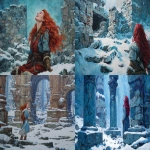





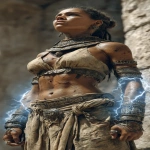
](https://images.ai-img.art/thumbnails/150/39c6bd41a1282b304a06fb11053bd009750b3879060719b1adb959228dbcd41a.webp)

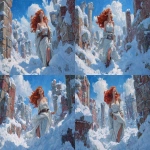


](https://images.ai-img.art/thumbnails/150/33a7122c923d87ba243a3afa0b16a930f1603be27b8ac938ff7f4ae4f5140553.webp)
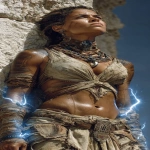

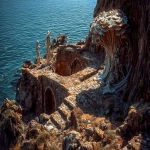
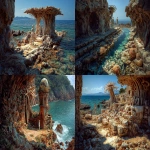
](https://images.ai-img.art/thumbnails/150/00df9b84a8818b4130bce9ca10c0c67ff2bc8952ca0fb5012dafc9b1c6378e67.webp)

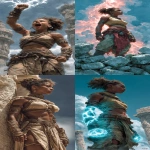



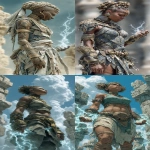

](https://images.ai-img.art/thumbnails/150/bc5b40f43007c984885fc5b035e0fd81d75554a8730895e067565a6b7050524b.webp)

